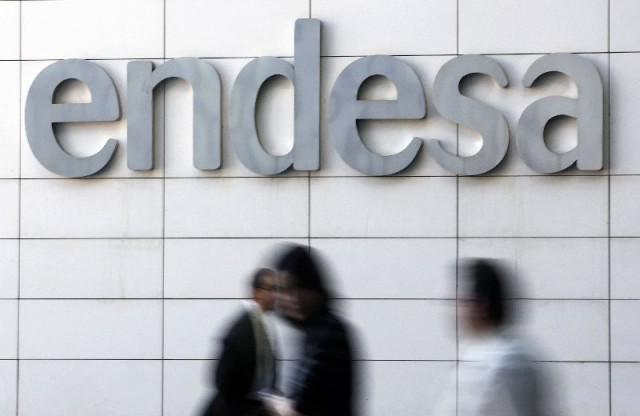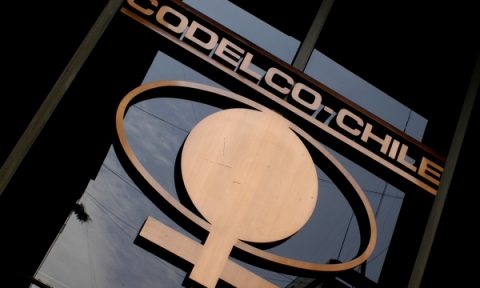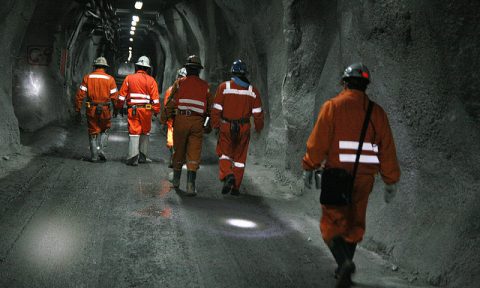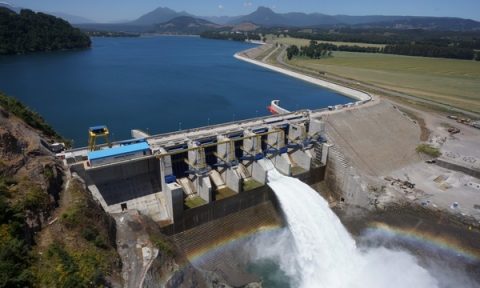The definitions of the Endesa’s new version

The largest generator company in the country learned its lesson after the rejection to HidroAysén and problems with Bocamina, admit the company. The power company is shifting its management with communities and its investment policy, so it decided to freeze water projects for 2,100 MW.
Endesa is experiencing a new phase, with lessons learned and with a different perspective on how they want to address future investments in Chile. The largest generator company in the country seeks to close a cycle, marked by the extensive processing of HidroAysén project, which lasted six years and ended with the rejection by the Committee of Ministers.
As part of this process, the electric company is taking important definitions which will be gravitating in the development of its upcoming projects and having a central axis: management with communities. Endesa is redefining its strategy on how to approach the environment when promoting new initiatives, with two goals behind: to improve their public image and gain acceptance of communities to undertake projects.
For that purpose, in recent months, the company has been working on the design of the new plan in response to the change verified in the environmental movement that has gradually been brewing for five years. “There has been a mutation in the last five years. HidroAysén is a project that is part of the previous stage, where there was a distinct environmental activism. Probably there also could have done things better, but today I am prepared to discuss the next step.
In Endesa Chile we have a 1,500 MW plan, some with RCA approved, others are in the pipeline, but to those projects we are trying to look with this new way of doing things. With an early approach to communities “, acknowledged the company president, Jorge Rosenblut, in a recent interview with Duna radio.
To implement this new approach, two months ago debuted the new Management of Community Relations and Communication, led by journalist María Teresa González, who previously held the General Management of the San Ignacio del Huinay Foundation also belonging to Endesa, and previously she served on the Human Relations Management of Essbio Healthcare Company.
Inside the electrical company explained that the genesis of the new vision is triggered shortly before, with the crisis caused by environmental conflicts facing the coal plant Bocamina 2 (350 MW), located in Coronel, Region VIII, paralyzed from the December 17 last year, by order of the Court of Appeals of Concepción.
To solve the area of conflict has become a priority for Endesa. So in the company intensified field work, work that has led Gonzalez and that has led it to travel three times a week to Coronel. All with the purpose of talking and achieve an approach with the groups opposing the initiative, explained Rosenblut.
Part of Gonzalez’s task will also be, to form regional teams in all regions where Endesa operates: Tarapaca Taltal, Huasco, Maule, Coquimbo, Valparaiso and Biobío. The latter was divided into zones Costa and Cordillera. The idea is to consist of integrated teams of three professionals, however, if the area is more complex, as it is today Region VIII, the group may add to more members. This process is already under development and expected to be completed next month, indicate on the electric company.
With Neltume hydroelectric project, which will be located in the IX Region, have also been doing renovation work in the form of link with communities, strengthening that has longer data, explained in Endesa. The initiative of 490 MW is in the process of Indigenous Consultation and has faced fierce opposition from indigenous peoples.
Study on how they are viewed
The key to Endesa is also enhance the image projected. “Endesa is getting in tune with the times, understanding the citizens dynamics to avoid going into permanent conflict,” says a director of the Enersis Holding, Endesa matrix. The objective, he says, is “to ensure that the public perception on the company changes. To see it as a good neighbor and not as a destroyer of the resources of the environment”.
To understand how they are perceived by different actors in society and be clear about what things improve, the company is working on two fronts. One of them is to hold meetings with environmental groups, NGOs and opinion leaders to gather their views.
Additionally, the company commissioned a study whose results expected to be in August, which will analyze the international experience on how the approach between businesses and communities and the laws governing the talks between the two is given. The idea is to replicate some of those experiences in Chile.
One of the countries they are analyzing is Canada, specifically, the experience of Hydro-Québec Electric Company and the participation of indigenous communities in local sustainable development. They are also looking at the formula for India, a country where there is a legal framework that agree how businesses and communities must bring their interests, mentioned in Endesa. The idea of having a legal framework is an instrument that the electric company is asking the government to make transparent these conversations.
In any case, the changes that the company is implementing and those who seek to execute will not see the results in the immediate, recognized in the company. In the electric company they know that this is long-term processes, says a Director of the group, who adds that it is investing to generate necessary trusts for the future. “The construction of trusts is not done overnight. That takes time and we have to dedicate a lot of work and effort”, he says.
Projects to the freezer
While the new model of relationship with communities is consolidating, Endesa decided not to advance in hydro projects that could open up new sources of conflict. It chose to freeze one of the largest investments in hydroelectric generation planned to run in the coming years, given the complex situation faced by the plants in Aysén. It is intended to develop a megaproject in Region X, in Futaleufu and Puelo rivers.
At first, the Endesa’s plan was to raise three plants-called Los Coigües, La Cuesta and Espolón-, with a total capacity of 1,367 MW. Thus, the Futaleufu dams would become the second largest project in Patagonia, only surpassed by HidroAysén. While in Puelo, the intention of the company was to build a 738 MW plant.
Studies of both initiatives are now in conceptual design phase and, for the moment, no progress towards pre-feasibility, say in the company.
The company knows that the eyes of environmental movements are on the area. This was recently said by the American environmentalist Robert Kennedy, one of the leading foreign HidroAysén opponents who claimed that the Futaleufu River is a priority. Kennedy supports NGOs Guardians of the Futaleufu River, opponents to any electrical survey on the runway.
The company acknowledged the difficulty of a project in the area pass the environmental assessment. “After HidroAysén it was clear that today is not the time to try realize megaprojects. The Futaleufu is an area that has already attracted the attention of environmental groups and any project we want to do there will face expressions of disapproval from the public”, said a Director of Enersis.
In the electric company the message is clear: no progress will be made in new hydro projects until the government develop a watershed plan and give a strategic importance to the use of the rivers in the south, which will not happen before 2015 .
Meanwhile, Endesa’s portfolio in Chile focuses on to move forward the river plant Los Cóndores (150 MW, Region VII) and the closing of the Taltal combined cycle plant (which will add 120 MW to 245 MW they have) , which is in the process of environmental assessment. Furthermore, the construction of hydroelectric last Neltume (490 MW) will be prioritized.
They are also moving in the thermoelectric Punta Alcalde (740 MW in region III) which already has favorable environmental qualification resolution for the plant and whose environmental impact study of the transmission line is in environmental assessment. “The focus of investment is now taking forward the projects that have some degree of progress and avoid open conflict sides” emphasizes a Director of the group.
Source: La Tercera











